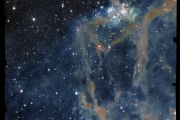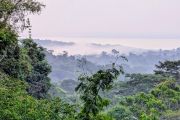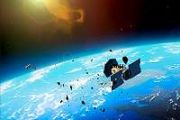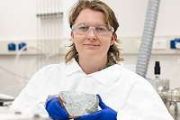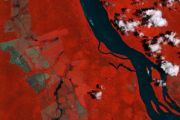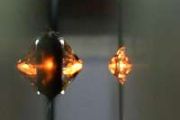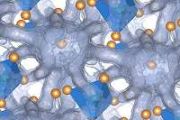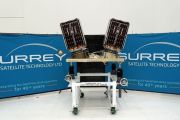
Copernical Team
10 billion year, 50,000 light-year journey to black hole
 A star near the supermassive black hole at the center of the Milky Way Galaxy originated outside of the Galaxy according to a new study. This is the first time a star of extragalactic origin has been found in the vicinity of the super massive black hole.
Many stars are observed near the supermassive black hole known as Sagittarius A* at the center of our Galaxy. But the black hole's intens
A star near the supermassive black hole at the center of the Milky Way Galaxy originated outside of the Galaxy according to a new study. This is the first time a star of extragalactic origin has been found in the vicinity of the super massive black hole.
Many stars are observed near the supermassive black hole known as Sagittarius A* at the center of our Galaxy. But the black hole's intens LeoLabs Partners with Aalyria to enhance global communication network security
 LeoLabs, a commercial provider of Space Traffic Management (STM), Space Situational Awareness (SSA), and Space Domain Awareness (SDA) services, has announced a pivotal partnership with Aalyria, a front-runner in advanced software-defined and optical networking communications. This collaboration aims to tackle the mounting challenges in space awareness for intricate communications networks that i
LeoLabs, a commercial provider of Space Traffic Management (STM), Space Situational Awareness (SSA), and Space Domain Awareness (SDA) services, has announced a pivotal partnership with Aalyria, a front-runner in advanced software-defined and optical networking communications. This collaboration aims to tackle the mounting challenges in space awareness for intricate communications networks that i Dark galactic region nicknamed "The Brick" explained with Webb telescope findings
 In a recent study led by University of Florida astronomer Adam Ginsburg, groundbreaking findings shed light on a mysterious dark region at the center of the Milky Way. The turbulent gas cloud, playfully nicknamed "The Brick" due to its opacity, has sparked lively debates within the scientific community for years.
To decipher its secrets, Ginsburg and his research team, including UF graduat
In a recent study led by University of Florida astronomer Adam Ginsburg, groundbreaking findings shed light on a mysterious dark region at the center of the Milky Way. The turbulent gas cloud, playfully nicknamed "The Brick" due to its opacity, has sparked lively debates within the scientific community for years.
To decipher its secrets, Ginsburg and his research team, including UF graduat UCD and Taoglas collaborate for launch of Ireland's first satellite, EIRSAT-1
 In a significant step for Ireland's involvement in space exploration, Taoglas, a leader in antenna and IoT solutions, has played a crucial role in the launch of the country's first satellite, the Educational Irish Research Satellite 1 (EIRSAT-1). This historic event took place on December 1, with EIRSAT-1 ascending aboard a SpaceX Falcon 9 rocket, marking Ireland's official entry into the realm
In a significant step for Ireland's involvement in space exploration, Taoglas, a leader in antenna and IoT solutions, has played a crucial role in the launch of the country's first satellite, the Educational Irish Research Satellite 1 (EIRSAT-1). This historic event took place on December 1, with EIRSAT-1 ascending aboard a SpaceX Falcon 9 rocket, marking Ireland's official entry into the realm York Space Systems achieves rapid start up of BANE satellite post launch
 Denver-based aerospace company York Space Systems (York) has reported establishing communication with its BANE spacecraft shortly after launch. The satellite, carried aboard a SpaceX Falcon 9 rocket, was launched from Vandenberg Space Force Base on December 1. York confirmed that it made successful first contact with the spacecraft on its first attempt, within just three hours following its depl
Denver-based aerospace company York Space Systems (York) has reported establishing communication with its BANE spacecraft shortly after launch. The satellite, carried aboard a SpaceX Falcon 9 rocket, was launched from Vandenberg Space Force Base on December 1. York confirmed that it made successful first contact with the spacecraft on its first attempt, within just three hours following its depl Georgia State professor granted $5 million to identify and characterize objects in space
 Georgia State Professor of Physics and Astronomy Stuart Jefferies has been awarded a $5 million, multi-institutional grant by the U.S. Air Force to develop techniques to detect, map and image faint objects in space.
The work could have far-reaching impacts, including strengthening national security in an increasingly congested space domain. The work will also advance the next generation of
Georgia State Professor of Physics and Astronomy Stuart Jefferies has been awarded a $5 million, multi-institutional grant by the U.S. Air Force to develop techniques to detect, map and image faint objects in space.
The work could have far-reaching impacts, including strengthening national security in an increasingly congested space domain. The work will also advance the next generation of Lift-off for EIRSAT-1, Ireland's first ever satellite
 Six years of hard work and dedication paid off in spectacular fashion today, as the Educational Irish Research Satellite, EIRSAT-1, successfully blasted off from Vandenberg Space Force Base, California. Hitching a ride on a Space-X Falcon-9 launcher, the tiny satellite - measuring just 10.7cm x 10.7cm x 22.7cm - has now made history as Ireland's first satellite!
EIRSAT-1 was designed, buil
Six years of hard work and dedication paid off in spectacular fashion today, as the Educational Irish Research Satellite, EIRSAT-1, successfully blasted off from Vandenberg Space Force Base, California. Hitching a ride on a Space-X Falcon-9 launcher, the tiny satellite - measuring just 10.7cm x 10.7cm x 22.7cm - has now made history as Ireland's first satellite!
EIRSAT-1 was designed, buil STS-61, the First Hubble Servicing Mission
 The discovery after its launch that the Hubble Space Telescope's primary mirror suffered from a flaw disappointed scientists who could not obtain the sharp images they had expected. But thanks to the Hubble's built-in feature of on-orbit servicing, NASA devised a plan to correct the telescope's optics during the first planned repair mission. The agency assigned one of its most experienced crews
The discovery after its launch that the Hubble Space Telescope's primary mirror suffered from a flaw disappointed scientists who could not obtain the sharp images they had expected. But thanks to the Hubble's built-in feature of on-orbit servicing, NASA devised a plan to correct the telescope's optics during the first planned repair mission. The agency assigned one of its most experienced crews Tracking undetectable space junk
 Satellite and spacecraft operators may finally be able to detect small pieces of debris orbiting Earth using an approach proposed by researchers from the University of Michigan.
"Right now, we detect space debris by looking for objects that reflect light or radar signals," said Nilton Renno, the principal investigator from the University of Michigan team and a professor of climate and spac
Satellite and spacecraft operators may finally be able to detect small pieces of debris orbiting Earth using an approach proposed by researchers from the University of Michigan.
"Right now, we detect space debris by looking for objects that reflect light or radar signals," said Nilton Renno, the principal investigator from the University of Michigan team and a professor of climate and spac Huginn inflight call with Andreas Mogensen and ESERO Denmark, Sweden, Norway and Finland
 Video:
00:20:11
Video:
00:20:11
ESA astronaut Andreas Mogensen called several ESERO establishments in Denmark, Sweden, Norway, and Finland where over 1000 students were waiting to ask questions about life in space and how science on the International Space Station can benefit life on Earth. Check it out to learn more about how water is recycled on the Space Station and what you need to be a good astronaut.




